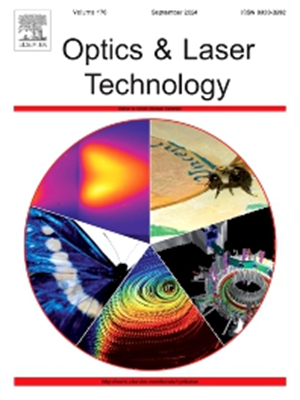基于深度学习的太赫兹元表面的高效按需逆设计
IF 5
2区 物理与天体物理
Q1 OPTICS
引用次数: 0
摘要
深度学习辅助的超表面逆设计加速了下一代通信和传感系统中太赫兹(THz)波技术的发展。然而,传统方法受到特定于任务的体系结构范例和当出现新需求时冗余数据集再生的限制。在这项工作中,我们提出了一种高效的太赫兹元表面按需设计方法(EDDM),以提高设计灵活性并减少资源消耗。该方法将遗传算法(GA)与迁移学习加速人工神经网络(ANN)相结合,实现快速目标驱动优化。采用具有共享参数的物理划分的人工神经网络模型来降低数据依赖性。同时,集成ga驱动的自适应适应度函数,将电磁(EM)需求转化为可量化的设计目标。EDDM将结构化数据集安排与人工神经网络的超参数优化相结合,实现了预训练模型的充分重用,在保持设计精度的同时显著降低了计算需求。作为应用实例,对基于EDDM的频谱定制超表面、高效发射阵列天线和极化变换器进行了验证。结果表明,该设计具有跨幅值、相位和极化参数的多适应性。EDDM建立了一个通用的范例,并提供了一种实用的方法来加速元表面在需求场景中的应用。本文章由计算机程序翻译,如有差异,请以英文原文为准。
An efficient on-demand inverse design of terahertz metasurfaces via deep learning
Deep learning-assisted metasurface inverse design has accelerated the development of terahertz (THz) wave technologies for next-generation communications and sensing systems. However, conventional approaches are limited by the task-specific architecture paradigms and redundant dataset regeneration when new needs arise. In this work, we propose an efficient on-demand design method (EDDM) for THz metasurfaces to enhance design flexibility and reduce resource consumption. The method integrates genetic algorithms (GA) with transfer learning-accelerated artificial neural networks (ANN) for rapid target-driven optimization. The physics-partitioned ANN models with shared parameters are employed to reduce data dependency. Concurrently, the GA-driven adaptive fitness functions are integrated to translate electromagnetic (EM) requirements into quantifiable design objectives. EDDM integrates structured dataset arrangement with hyperparameter optimization of ANN to enable full reuse of pre-trained models, significantly reducing computational demands while maintaining design precision. As a demonstration of applications, the spectrum-customized metasurfaces, high-efficiency transmitarray antennas, and polarization converters are validated based on EDDM. The results indicate the design exhibits multi-adaptability across amplitude, phase, and polarization specifications respectively. EDDM establishes a versatile paradigm and offers a practical approach to expedite the applications of metasurfaces in demand scenarios.
求助全文
通过发布文献求助,成功后即可免费获取论文全文。
去求助
来源期刊
CiteScore
8.50
自引率
10.00%
发文量
1060
审稿时长
3.4 months
期刊介绍:
Optics & Laser Technology aims to provide a vehicle for the publication of a broad range of high quality research and review papers in those fields of scientific and engineering research appertaining to the development and application of the technology of optics and lasers. Papers describing original work in these areas are submitted to rigorous refereeing prior to acceptance for publication.
The scope of Optics & Laser Technology encompasses, but is not restricted to, the following areas:
•development in all types of lasers
•developments in optoelectronic devices and photonics
•developments in new photonics and optical concepts
•developments in conventional optics, optical instruments and components
•techniques of optical metrology, including interferometry and optical fibre sensors
•LIDAR and other non-contact optical measurement techniques, including optical methods in heat and fluid flow
•applications of lasers to materials processing, optical NDT display (including holography) and optical communication
•research and development in the field of laser safety including studies of hazards resulting from the applications of lasers (laser safety, hazards of laser fume)
•developments in optical computing and optical information processing
•developments in new optical materials
•developments in new optical characterization methods and techniques
•developments in quantum optics
•developments in light assisted micro and nanofabrication methods and techniques
•developments in nanophotonics and biophotonics
•developments in imaging processing and systems

 求助内容:
求助内容: 应助结果提醒方式:
应助结果提醒方式:


